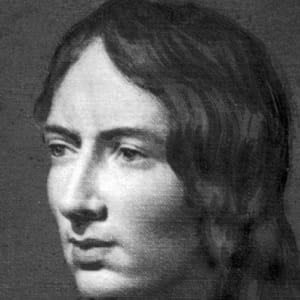
Emily Brontë
Emily Brontë is best known for authoring the novel Wuthering Heights. She was the sister of Charlotte and Anne Brontë, also famous authors.
Synopsis
Born in Thornton, Yorkshire, England, on July 30, 1818, Emily Jane Brontë lived a quiet life in Yorkshire with her clergyman father; brother, Branwell Brontë; and two sisters, Charlotte and Anne. The sisters enjoyed writing poetry and novels, which they published under pseudonyms. As "Ellis Bell," Emily wrote Wuthering Heights (1847)—her only published novel—which garnered wide critical and commerical acclaim. Emily Brontë died in Haworth, Yorkshire, England, on December 19, 1848—the same year that her brother, Branwell, passed away.
Early Life
Born on July 30, 1818, in Thornton, Yorkshire, England, Emily Brontë is best remembered for her 1847 novel, Wuthering Heights. She was not the only creative talent in her family—her sisters Charlotte and Anne enjoyed some literary success as well. Her father had published several works during his lifetime, too.
Emily was the fifth child of Reverend Patrick Brontë and his wife, Maria Branwell Brontë. The family moved to Haworth in April 1821. Only a few months later, Brontë's mother died of cancer; her death came nearly nine months after the birth of her sister, Anne. Her mother's sister, Elizabeth Branwell, came to live with the family to help care for the children.
At the age of 6, Emily was sent to the Clergy Daughters' School at Cowan Bridge with Charlotte and her two oldest sisters, Elizabeth and Maria. Both Elizabeth and Maria became seriously ill at school and returned home, where they died of tuberculosis in 1825. Brontë's father removed both Emily and Charlotte from the school as well.
At home in Haworth, Brontë enjoyed her quiet life. She read extensively and began to make up stories with her siblings. The surviving Brontë children, which included brother Branwell, had strong imaginations. They created tales inspired by toy soldiers given to Branwell by their father. In 1835, the shy Emily tried leaving home for school. She went with Charlotte to Miss Wooler's school in Roe Head where Charlotte worked as a teacher. But she stayed only a few months before heading back to Haworth.
Coming from a poor family, Brontë tried to find work. She became a teacher at the Law Hill School in September 1837, but she left her position the following March. Brontë and her sister Charlotte traveled to Brussels in 1842 to study, but the death of their aunt Elizabeth forced them to return home.
'Wuthering Heights'
Some of Emily's earliest known works involve a fictional world called Gondal, which she created with her sister Anne. She wrote both prose and poems about this imaginary place and its inhabitants. Emily also wrote other poems as well. Her sister Charlotte discovered some of Emily's poems and sought to publish them along with her own work and some by Anne. The three sisters used male pen names for their collection—Poems by Currer, Ellis, and Acton Bell. Published in 1846, the book only sold a few copies and garnered little attention.
Again publishing as Ellis Bell, Brontë published her defining work, Wuthering Heights, in December 1847. The complex novel explores two families—the Earnshaws and the Lintons—across two generations and their stately homes, Wuthering Heights and Thrushcross Grange. Heathcliff, an orphan taken in by the Earnshaws, is the driving force between the action in the book. He first motivated by his love for his Catherine Earnshaw, then by his desire for revenge against her for what he believed to be rejection.
Death and Legacy
At first, reviewers did not know what to make of Wuthering Heights. It was only after Brontë's death that the book developed its reputation as a literary masterwork. She died of tuberculosis on December 19, 1848, nearly two months after her brother, Branwell, succumbed to the same disease. Her sister Anne also fell ill and died of tuberculosis the following May.
Interest in Brontë's work and life remains strong today. The parsonage where Brontë spent much of her life is now a museum. The Brontë Society operates the museum and works to preserve and honor the work of the Brontë sisters.



